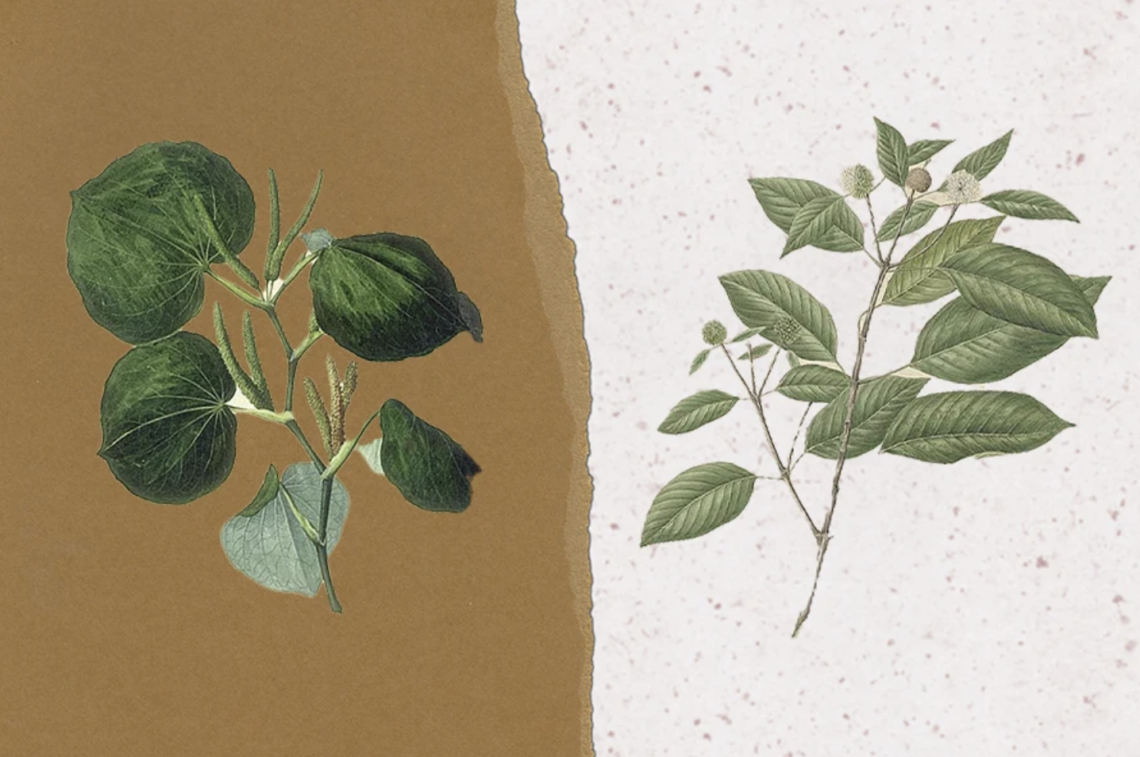The adoption of traditional plant medicines by Western society has always been fraught. Even when there are honest efforts to recognize the cultures and contexts of their traditional use, mind-altering plants inevitably take on new patterns, new forms, and new meanings when introduced to modern contexts. These transformed plants, in turn, become the subject of extensive and often contentious debate within scientific literature and regulatory politics.
The recent history of kratom and kava can teach us a lot about how this process can go awry and devolve into bad outcomes, bad headlines, and ill-informed policy. But they also show the way forward—how good science, responsible products, and common sense standards can prevail in creating conditions for safer use.
As more Americans add kratom and kava to their rituals, it’s worth taking stock of the winding path they’ve taken up to the present, where their cult followings sit on the cusp of going mainstream.
Kava: Transcending Prohibition
It makes your mouth numb, but it feels good. Quiet, but content. Across the South Pacific, the bitter liquid is served in coconut shells. It’s relaxing. It’s kava. It’s a brew made from the pulverized roots of the Piper methysticum plant. Islanders have enjoyed it for millennia—the plant is embedded in stories and lore throughout the region. It’s a part of cuisines, culture—it’s an Indigenous food. It’s hard to say how far back our human relationship with kava goes. But it’s safe to say that, in recent years, it’s taken on a different tune. Like many psychoactive plants caught in the ebbs and flows of commerce and governance, kava’s story is a complicated one.
In the islands of the South Pacific, such as Vanuatu and Fiji, drinking kava is a bedrock of the way of life–among the most ancient of customs. Nearby, the king of Tonga ascends to the throne during a royal kava ceremony, while coins in Fiji are decorated by wooden bowls used to consume the calming anxiolytic. Its cultural significance in the region cannot be underestimated. “This is not a plant that you take to get fucked up,” says Rami Kayali, the owner of two kava bars, MeloMelo, in northern California, which serves kava-chai combos and kava coladas, among other preparations. “This is part of the culture, tradition, and ritual in the South Pacific, and we should treat it with a little bit of reverence in that regard.”
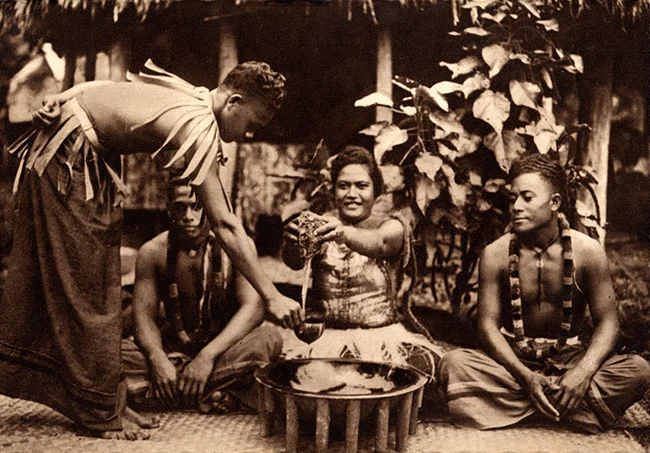
Today, there are now more than 200 kava bars in the United States. Kava mocktails are on menus at varying strengths at a slew of fashionable eateries and non-alcohol saloons across the Americas. “It makes you feel very relaxed,” says drug history expert Mike Jay, author of Psychonauts: Drugs and the Making of the Modern Mind, who has spent time in Vanuatu. “It has the potential to be almost like a herbal valium: it’s very good for calming and anti-anxiety. Anybody who has problems sleeping would find it very useful.”
The growing interest in kava—and other active plants—comes as a generation of younger people are increasingly turning away from alcohol. But not everyone wants to drink kombucha or syrupy mocktails all night: If the “Cali Sober” or “Sober Curious” movements are any indication, humans have a thirst to explore new and more expansive states of consciousness.
Kava—Bans, Supplements, and… Moral Panic?
Word about kava began to travel outside of Polynesia at the turn of the 20th century. The plant’s sedative properties piqued the curiosity of Westerners, who began drinking the brew outside of traditional contexts. Kava earned writeups in the New York Times as early as 1895. “Many of the European residents drink it regularly,” they write of Europeans living in Polynesia at the time, “but, of course, then it’s prepared differently.” Polynesians traditionally make kava beverages with water. In some places, the root is chewed, and the pulp is made into a brew. In others, it’s pulverized in a large wooden bowl.

The plant continued to be viewed by Westerners as a cultural novelty through the 1960s. Then in the 1980s, Kava’s botanical journey took an unexpected turn: the root entered the world of dietary supplements. Kava roots contain unique chemical compounds called kavalactones, which are natural anxiety relievers. By the new millennium, kava transitioned from a beverage sipped from a coconut shell to a fine powder stuffed in pill caps lined up in plastic bottles on shelves in pharmacies and natural food stores. And then, after 3,000 years of traditional use, the headlines began. There were claims that people were getting sick—that kava might be harmful to the liver. The policy actions were swift.
In 2002, kava was banned in Germany, Canada, France, the UK, and elsewhere after a disputed study highlighted 60 cases of potential harmful health events, including cases of liver toxicity. Yet, the research was called into question as weak evidence. A 90-page report from the Word Health Organization (WHO) highlights claims that the bans “unnecessarily harmed the economies of the Pacific Island kava-producing nations and denied patients an effective treatment for anxiety.” Jay says that the small number of issues came when kava was used in conjunction with alcohol. “That study has never been duplicated: I think it was used to shut the door on kava as a product,” he claims.
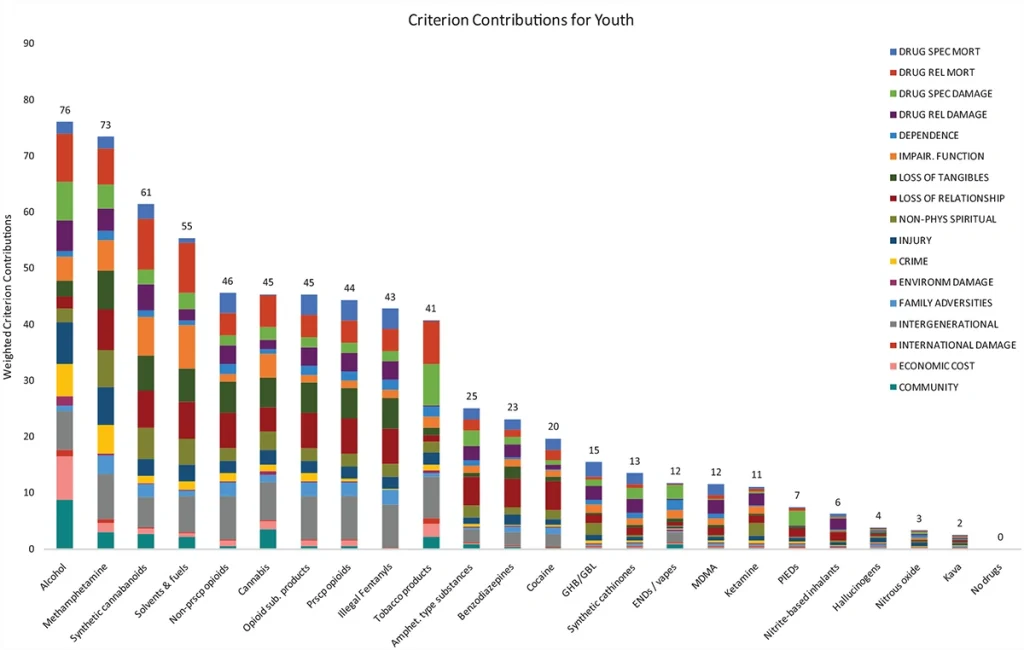
In 2014, German courts reviewed the claims of health hazards and ruled there was insufficient evidence for a ban—researchers couldn’t prove that kava was actually harmful, particularly when compared to the legal pharmaceutical anxiety relievers that were already on the market. According to the U.S. Centers for Disease Control (CDC), prescription benzodiazepines like Ativan and Xanax were responsible for 7,000 overdose deaths between January 2019 and June 2020. In contrast, a 2019 review published in Drug Science suggests that, based on current research, kava causes fatal liver toxicity in one of every 60–125 million patients. The study authors noted “a rise of kava misinformation,” describing “claims of harm and reports of ‘kava as killer’ as ‘dubiously simplistic’ and based on ‘erroneous statements.’”
Eventually, German kava bans were overturned. In the United States, kava comes with an FDA warning, but the plant has never been banned. But, in the United Kingdom and other European countries, prohibition remains—despite limited evidence of harm. Recently, research from the University of Otego in New Zealand ranked alcohol as the most harmful drug of choice, while kava—a popular drink in the island country—ranks at the bottom of the list, second only to “no drugs.”
After decades of controversy, kava now enjoys broad cultural acceptance. But, another plant, kratom (Mitragyna speciosa), is at an earlier stage in that journey, and is currently in the midst of its own prohibitory battles.
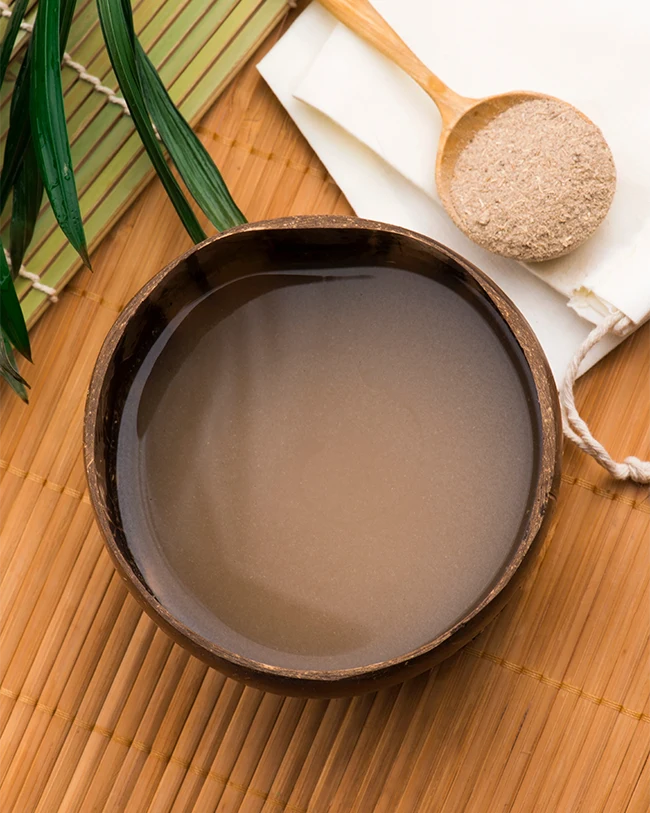
Kratom (which is pronounced krah-tom) is a Southeast Asian evergreen tree related to the coffee plant. Leaves are traditionally dried and brewed into tea, or chewed one or two at a time. Kratom is widely valued for its ability to boost productivity and focus. The plant’s effects depend on the dose and preparation: It’s like matcha at smaller doses and becomes more euphoric—and more controversial—in larger doses.
Much like kava, kratom’s entrance into Western markets has been characterized by a great deal of controversy, fueled by negative headlines and reactionary attempts at prohibition.
Kratom in the US: The Wild West
In Southeast Asia, kratom has been consumed for centuries in low doses for its stimulating effects, often as a productivity tool for those working long hours. Millions in the US consume it the same way. However, in the US, kratom is best known as a natural pain reliever and alternative to harmful opiates or a way of getting off of them, a specific use case that involves frequent use of significantly more potent and concentrated doses of the plant.
But given the exigencies of the opioid epidemic, kratom is often portrayed in that context. Kratom is not an opiate itself—natural opiates come from unique compounds found in certain species of poppy. Kratom contains chemical compounds, mitragynine and 7-hydroxymitragynine, that work on opiate receptors within the human body, albeit in different ways than common opiate drugs. Common opiates like heroin and fentanyl carry a particularly high overdose risk due to their concentration and their ability to depress key reflex centers in the brainstem that control a person’s ability to breathe automatically. Emerging science demonstrates that kratom works differently; it’s a “partial opioid agonist,” whereas common opiates fully bind to opioid receptors.
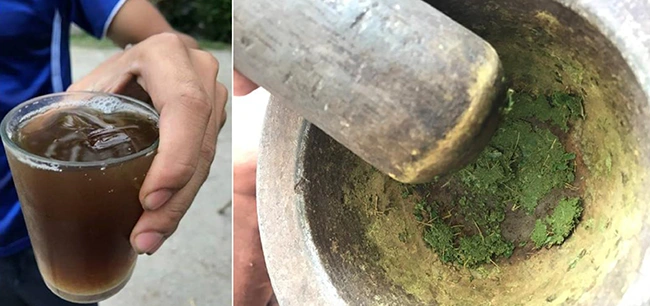
Kratom is often portrayed as dangerous—and in some cases deadly. Google kratom, and you’ll see reports of people overdosing, but those stats are fueled by data that, on closer examination, presents a much more nuanced story. For example, between July 2016 to December 2017, the CDC controversially identified 91 overdose deaths involving kratom, while also admitting in the fine print that there were other more toxic drugs involved in all but seven of the cases, and even among those seven cases, “the presence of additional substances cannot be ruled out.” A similarly shocking estimate comes from the WHO, which cited in 2021 over 300 potential deaths involving kratom since 2010, and like the CDC figure, it was misleading in that less than a quarter of these cases involved kratom alone. WHO decided against recommending that kratom be scheduled, saying, “although mitragynine has been analytically confirmed in a number of deaths, almost all involve use of other substances.” Current HHS Secretary Xavier Becerra said there are substantial “knowledge gaps” regarding kratom and that “kratom-involved overdose deaths have occurred after use of adulterated kratom products or taking kratom with other substances.”
Kratom products have nevertheless been implicated in a number of wrongful death lawsuits, often involving high dosages, mixed substances, and other synthetic drugs. NPR reports that kratom tea is being served in “football-sized” cups at a Florida bar, reminiscent of Big Gulp and Super-Sized soft drinks—a far cry from the one or two leaves chewed by workers in Thailand. A mother in Florida died after consuming a “kratom” product ordered off the internet, the words “Space Dust” handwritten across a package of nondescript pale yellow powder; a judge subsequently awarded the family $11 million in damages.
High doses and adulterated products are a key issue behind many of the negative headlines. In a 2023 review published in Current Addiction Reports, researchers write: “As with any compound ingested in large quantities, it is possible to develop lethal toxicities with kratom in a dose-dependent fashion,” but that “use via the traditional mode of consumption, such as chewing or brewing the leaves as a tea, would require a tremendous amount of kratom to be ingested.” Strong kratom products and mixing kratom with “illicit substances and pharmaceuticals…with other opioids being common coingestants,” can increase risks and make kratom consumption less safe, the report suggests.
There is little research on kratom dependence—most of the conversation about the plant centers on its use as a harm-reduction tool for other substances, like synthetic opiates. But as with many other substances, there are definite risk factors for developing a dependence on kratom, including regular use of large quantities, especially among those who have a history of substance dependence. “We’re seeing reports emerging that some folks do develop tolerance and subsequent dependence with physical withdrawal symptoms,” Oliver Grundmann, clinical associate professor at University of Florida, tells DoubleBlind.“We don’t have a good idea what particular patient is more likely to develop tolerance or dependence. There’s a dose-dependent relationship,” he says. “At lower doses, it’s still more of a stimulant, and at higher doses, it seems to have more analgesic and opioid-like properties.”
Albert Garcia-Romeu, Ph.D., instructor of psychiatry and behavioral sciences at the Johns Hopkins University School of Medicine, and author of a recent survey of thousands of kratom users, says, “Although our findings show kratom to be relatively safe according to these self-reports, unregulated medicinal supplements raise concerns with respect to contamination or higher doses of the active chemicals, which could increase negative side effects and harmful responses.” He adds, “This is why we advocate for the FDA to regulate kratom, which would require testing for impurities and maintaining safe levels of the active chemicals. Otherwise, unregulated products run the risk of unsafe additives and dosing problems, which could be like getting a shot of grain alcohol when you were trying to order a beer.”
Kratom use in lower doses, and via safer methods, is poorly represented in the scientific literature on the subject. Most studies view the benefits and risks of kratom in the context of high doses and concentrations. That gives a poor representation of what kratom use is really about; a majority of the millions of kratom users in the US use normal doses for productivity and relaxation.
But in the US, where kratom goes largely unregulated, there are a set of adulterated, poorly made, and falsely labeled products on the market, causing real harm and provoking heavy crackdowns.
The Failure to Responsibly Regulate Kratom
A failure to responsibly regulate kratom, some argue, has fueled an environment in which dependencies and mishaps can more easily occur. Christopher McCurdy, professor of medicinal chemistry at the University of Florida, says that the mostly unregulated nature of the kratom industry and a failure to provide consumers information could be responsible for most of the harm. The types of kratom products sold in gas stations are usually the most criticized. “The risk of kratom addiction appears to be low, but there are people who are treated for kratom addiction,” he wrote in an article for The Conversation. “It is our hypothesis that addiction to kratom is due to the inferior quality and amount of the product ingested.”
… the mostly unregulated nature of the kratom industry and a failure to provide consumers information could be responsible for most of the harm. The types of kratom products sold in gas stations are usually the most criticized.
The kratom market, at least in the US, has long resembled far more of a Wild West than kava. Kratom is predominantly sold via smoke shops, online specialty stores, and herbalists, usually in capsules within packages often branded with hologram cartoons, contributing to this “gas station” image that the industry is working to overcome. Haddow argues in a recent statement that the harm caused by unsafe products like the aforementioned “Space Dust” is, “the result of a combination of FDA’s failures to regulate kratom products and aggressive trial attorney actions that fail to hold the FDA accountable for their lack of regulations.” The AKA called on the FDA to “immediately publish product manufacturing standards for kratom products that are sold to consumers and encourage the removal of kratom products that do not provide adequate labeling instructions: including recommended serving sizes and product ingredient listings, and appropriate warnings on conditions of use.”

“I hope that we get labeling requirements,” says Grundmann. “I hope that there are certain warnings on there that pregnant women, for example, those under 18, should not consume it, and that anybody who has a history of tolerance dependence, or use disorder, definitely needs to consult with their provider before they start taking kratom.”
The AKA has led efforts to regulate sales of the plant, and, in June, Florida became the 11th state to sign into law the Kratom Consumer Protection Act (KCPA). The KCPA, a framework for state laws, is intended as an alternative to prohibition, prioritizing transparency, testing, quality control, and regulated access over bans and criminalization. “The law requires that products be manufactured and labeled properly, and restricted (not sold) to kids,” Haddow says. “More and more of the industry is recognizing that they have to be compliant.” A federal version of the KCPA, the Federal Clarity for Kratom Consumers Act, was recently introduced with bipartisan sponsorship, and would protect consumers and producers from the FDA’s efforts at outright prohibition.
Instead of regulating the plant, in 2016, at the direction of the FDA, the US Drug Enforcement Agency (DEA) moved to categorize kratom as a Schedule I substance, citing health concerns. Yet, the prospect of a ban prompted an unprecedented grassroots movement: a petition against the ban garnered 130,000 signatures, including support from crossparty Congressional representatives ranging from Orrin Hatch (R-Utah), to Cory Booker (D-NJ) and Bernie Sanders (I – VT), along with a chorus of scientists and advocates. The DEA made an unprecedented U-turn, reversing their decision to schedule the plant after such a strong response from a grassroots movement made up of veterans and other passionate users. The WHO, not long afterwards, underwent a similar review and decided not to recommend scheduling kratom.
In a recent op-ed, retired Marine Corps lieutenant general and House Representative Jack Bergman (R-Mich) expressed the frustration bluntly, “The FDA, which has a long-standing bias against any supplement that is not a pharmaceutical that can profit Big Pharma and their own budget, has pushed for kratom to be labeled a Controlled Substance by misstating the science, ignoring kratom’s long history of safe use, and falsely claiming kratom has the same effects as classic opioids.”
Kratom remains illegal in five US states which have passed their own laws, along with some local jurisdictions. Texas and Florida recently passed the KCPA and, in Rhode Island, one of the five states with a ban, the KCPA has passed the Houseand is currently under review in the state Senate. But going through state legislatures is an arduous and piecemeal approach. “It would become better if the FDA would responsibly regulate kratom,” adds Haddow. “They just haven’t done it.”
“Kratom has probably had the most rocky path in its relationship with regulation,” says Soren Shade, founder of Top Tree Herbs, which sells kratom tea bags. Shade created this particular product to better align with the way kratom is used traditionally.
The battle today is about how to responsibly regulate it, even if the FDA won’t. “We are huge supporters of sensible kratom regulation like we see in many states now,” said Justin Wolf, CEO and Co-Founder of New Brew, a company that makes ‘euphoric seltzers’ that contain comparatively low doses of kratom leaf extract (25mg) and kava root extract (125mg) per serving—New Brew is also the sponsor of this article. Wolf said, “because it will target the bad actors causing the real harm and allow us to finally appreciate the considerable benefits that can come with moderate, mindful use. We should be talking more about how to safely use these plants—not just whether to keep them legal.”
Regulation, not Prohibition
The stories surrounding these two plants are complex and seemingly geared toward extremes. In many ways, kava has returned to a place of good favor in much of the world. But, the conversation about kratom is polarized.
The stories surrounding these two plants are complex and seemingly geared toward extremes.
Grundmann calls it a pendulum. “I’m not necessarily advocating ‘Oh, it needs to be completely unregulated,’ to give the product industry leeway, or whatever,” he says. “I think there needs to be a good middle ground, to avoid this pendulum swinging in the direction of complete scheduling and completely removing it from the market, which would be very detrimental to anybody who’s using it at the moment.” Still, “there should be some oversight,” he says. Wolf agrees. “What we need is common-sense regulation and reasonable standards for labeling and manufacturing. The way that a product is regulated and, by extension, sold, has a massive impact on how it’s perceived by the general public. And it also has a massive impact on what kind of outcomes people have [with the plant].”
For now, the battle for those standards is being waged state by state with the AKA’s efforts to pass the KCPA, an effort that is soon moving to the national stage.
In the meantime, it’s incumbent on the industry to self-regulate and lead with transparency and education. Wolfhighlights the benefits of mindful and moderate use, while expressing the need for those principles to be enshrined in national policy. New Brew, he says, doesn’t recommend that consumers drink their product every day, and not too much at once. They test the quality of their ingredients and state them clearly on the can. The company has also voluntarily imposed age limits on their product, and has raised them from 18+ to 21+. They would prefer that such actions were not voluntary but instead enforced through regulations like the KCPA.
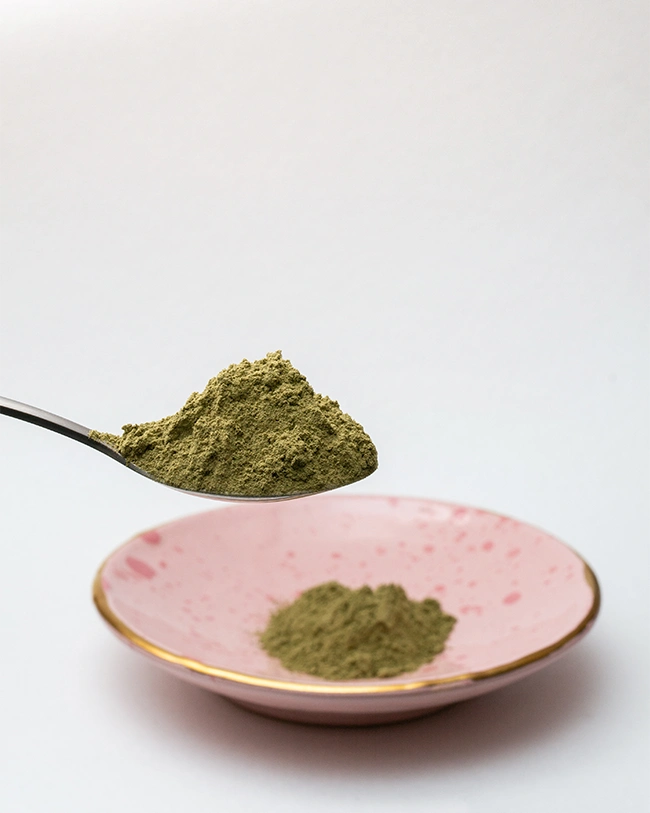
Just as with alcohol, caffeine, cannabis, and other pleasurable substances, moderation with kratom and kava is important. “I am extra cautious,” says Wolf, who recommends that anyone with a history of substance dependence take extra care when consuming his product. “Whenever I’m using any substance now—including kratom and kava—I make sure I do so mindfully. I’m very careful to maintain awareness around the way I’m using it, to make sure that I’m using it in moderation, and most importantly, that I’m honest with myself about how I’m using it, and why I’m using it. Our product’s format, dosage and labeling are all designed to promote that kind of mindful and informed use.”
Kratom and kava are entirely different plants from different parts of the world, but their paths share a lot in common with one another, as they do with the paths of cannabis, psilocybin, and even coffee: from novelty, to subculture, to controversy and finally into general acceptance. If there’s one thing that we’ve learned, it’s that crossing that final boundary into the mainstream can’t happen without good science, sensible policies, and honest reporting, which in turn lead to safer products and more responsible use. Then—and only then—can these plants take their rightful place in our modern rituals.

